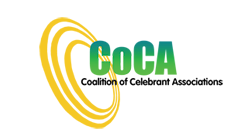Assessment suggestions
This section contains materials developed by the Subject Matter Expert Committee (SMEG) for the review of the Celebrancy Qualification that was done between 2012 and 2015.
The SMEG was particularly concerned that celebrancy graduates have the necessary web, IT and other skills to make the best use of the developing technologies for their individual celebrancy practicies (businesses). The Skills Council advised against a specific unit on these skills. That is the rationale for the document titled General assessment guidance. The documents for specific units in this section were examples of assessment tasks, but removed to enable the RTOs to design their own assessment. They are included as suggestions should an RTO be looking examples of course tasks.
Also included here, is a list of the assessment criteria for the Celebrancy core and elective units, as well as a summary of the minimum number and type of the ceremonies required, should an RTO wish to streamline their approach to these.
Please contact us for more information and/ or clarficiation.

